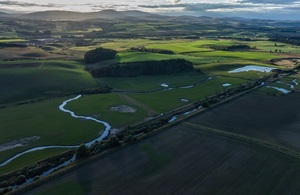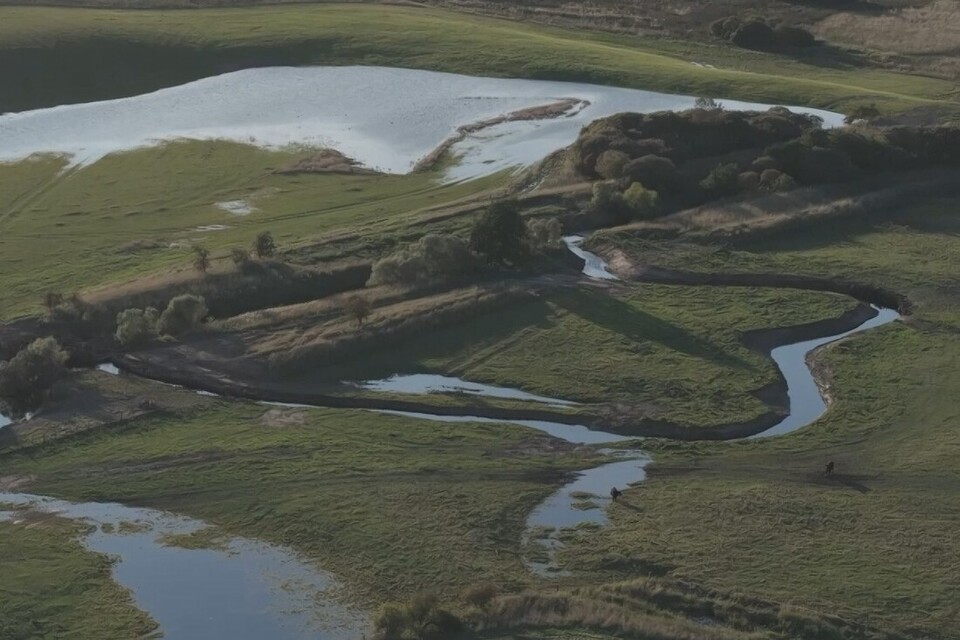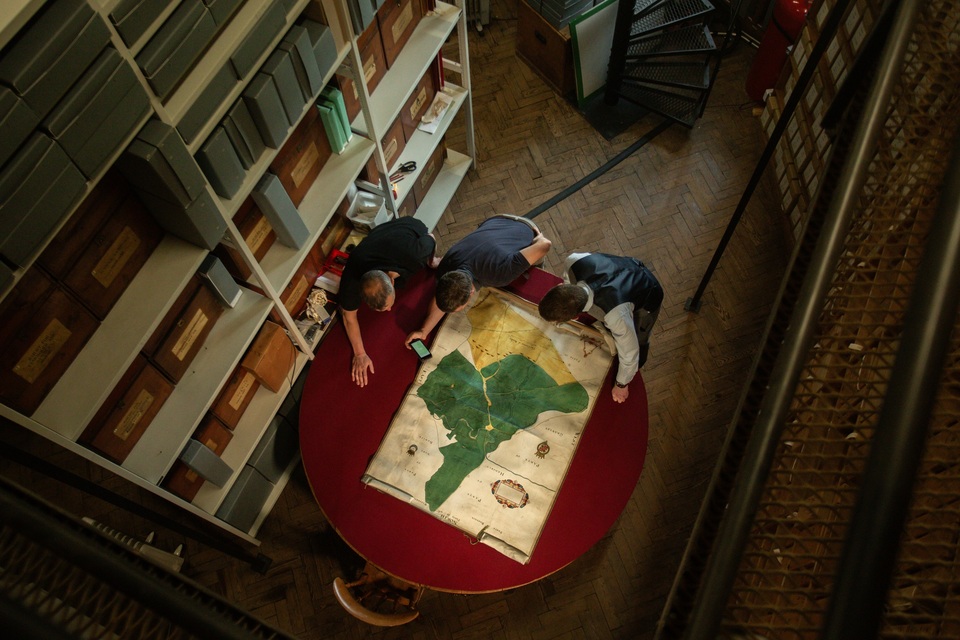Major Northumberland river restoration project is complete
One of the largest river restoration projects in the UK - in the Breamish Valley, Northumberland - is complete.

The image shows the new meanders created as part of the restoration project. Credit: Tommy Wilkinson.
One of the largest river restoration projects in the UK is complete in the Breamish Valley, Northumberland.
The River Breamish at Harehope Estate, South of Wooler, was historically modified and straightened centuries ago for agricultural purposes.
It’s estimated that around one mile of river channel was lost.
This created a river disconnected from its floodplain leading to a decline in freshwater species, reduced biodiversity and an increased risk of flooding downstream. The Breamish channel is now officially classed as in ‘unfavourable condition’.
Now this ambitious flagship project has combined studying ancient maps and using modern technology to trace the original channel and bring it back to its historic roots.
Restoring the river’s natural processes and allowing it to naturally flood the surrounding area has multiple benefits - creating a mosaic of new habitats, better fish passage, water quality improvements and climate change resilience.
The project is a key element of the River Till Restoration Strategy and was delivered through the LIFE WADER nature-recovery project in partnership with the Environment Agency, Tweed Forum, Natural England and local landowner, Harehope Estate.

The image shows one of the new meanders created as part of the restoration project. Credit: Tommy Wilkinson.
‘Fantastic step forward for nature’
Jim Heslop, Environment Programme Manager for the Environment Agency in the North East, said:
Restoring the River Breamish to its dynamic and diverse natural state is a fantastic step forward for nature, bringing multiple benefits for people and wildlife.
Allowing the river to move and interact with its floodplain once again will bring it back to life, creating wetland habitats where wildlife can thrive, while also improving water quality and reducing downstream floodwater pressures by slowing the flow and storing more water on the floodplain.
The River Till and its tributaries, including the River Breamish, flow through one of the most picturesque and important landscapes in England in Northumberland National Park.
The Till catchment is of high conservation and ecological importance, designated both SSSI (Site of Special Scientific Interest) and SAC (Special Area of Conservation) in recognition of its unique habitats and the presence of protected species including otter, Atlantic salmon, and all three native species of lamprey.
However, over many centuries, like so many river channels in the UK, it has been progressively straightened and modified to make way for intensive farming.
Over the past 200 years active management, including bank protection, dredging and the construction of flood banks, have kept the river pinned to its straight channel, disconnecting from its flood plain.
The team studied ancient maps from the 1600s courtesy of the archives at Alnwick Castle, which showed the original floodplains.
This, combined with detailed modern Light Detection and Ranging (LiDAR) 3D modelling of the terrain, helped trace the river’s exact original meanders.

The team used ancient maps from the Alnwick Castle archives to trace the river's original channel. Credit: Tommy Wilkinson.
River will develop its own ‘final design’
The restoration work included excavation and diversion of the river into historic channels, installation of silt traps, shallow ponds, wetlands, embankment breaches and the construction of woody dams, which will deflect the water into the new channels.
The river will develop its own ‘final design’ and following recent rainfall it’s already spilled onto its floodplains, forming wetlands, with the river adapting and changing constantly.
Habitat in and around the new river channel is already developing and being used by wildlife including heron, kingfishers and Damsel flies.
Vegetation is starting to establish with water crowfoot sighted in the newly remeandered section. The presence of this rare plant species has contributed to the Till catchment’s designation as a SAC and SSSI.
And fish have quickly taken advantage of the newly created channels, with salmon and sea trout moving freely through the site on their way to upstream spawning grounds.
A key part of the Till River Restoration Strategy has been working with landowners to help them transition away from farming with an embanked heavily managed river to a one where the river has more space.
Philip Kearney, Project Manager at Tweed Forum, which delivered the project on the ground, said:
It’s fantastic to see the Breamish flowing freely once again with space to move and evolve. We’re already witnessing wildlife returning, floodwaters being stored naturally and the landscape beginning to heal.
The cooperation of the landowner has been essential as we’ve worked together to restore the river’s natural processes.
This project shows what can be achieved when conservation, science and farming come together to give rivers the room they need to help the landscape thrive.
Landowner played key role
The management of the flooplain and surrounding land has been supported through the Countryside Stewardship scheme, which recognises the long-term changes in management that are needed to enable the river to renaturalise and new floodplain habitat to develop.
The LIFE WADER project is a five-year £5.8m nature recovery project co-funded by the European Union, completing in December 2026. It has already seen significant habitat restoration across the region.
LIFE WADER Project Manager Liz Humphreys said:
This project has only been possible by having landowners and farmers who recognise some of the long-term benefits of restoration and have been willing to work in partnership on such a big and complex scheme.
I’m incredibly proud the LIFE WADER project has been able to facilitate this exciting work, which has already inspired other landowners in the area to explore river restoration options on their own land, showing the legacy this flagship project will create.
WADER (Water and Disturbance Environmental Restoration) is led by Natural England and brings together a range of experts to improve the ecological condition of more than 49,000 hectares of river, coastal and marine habitat and improve water quality within the River Tweed catchment and along the Northumberland Coast.
The project exemplifies how government agencies, conservation organisations and private landowners can work together to delivery nature recovery at scale.
The restored River Breamish will be monitored by project partners to track improvements in water quality, fish populations, and the establishment of wetland habitats, with findings shared to support similar restoration projects across the UK.